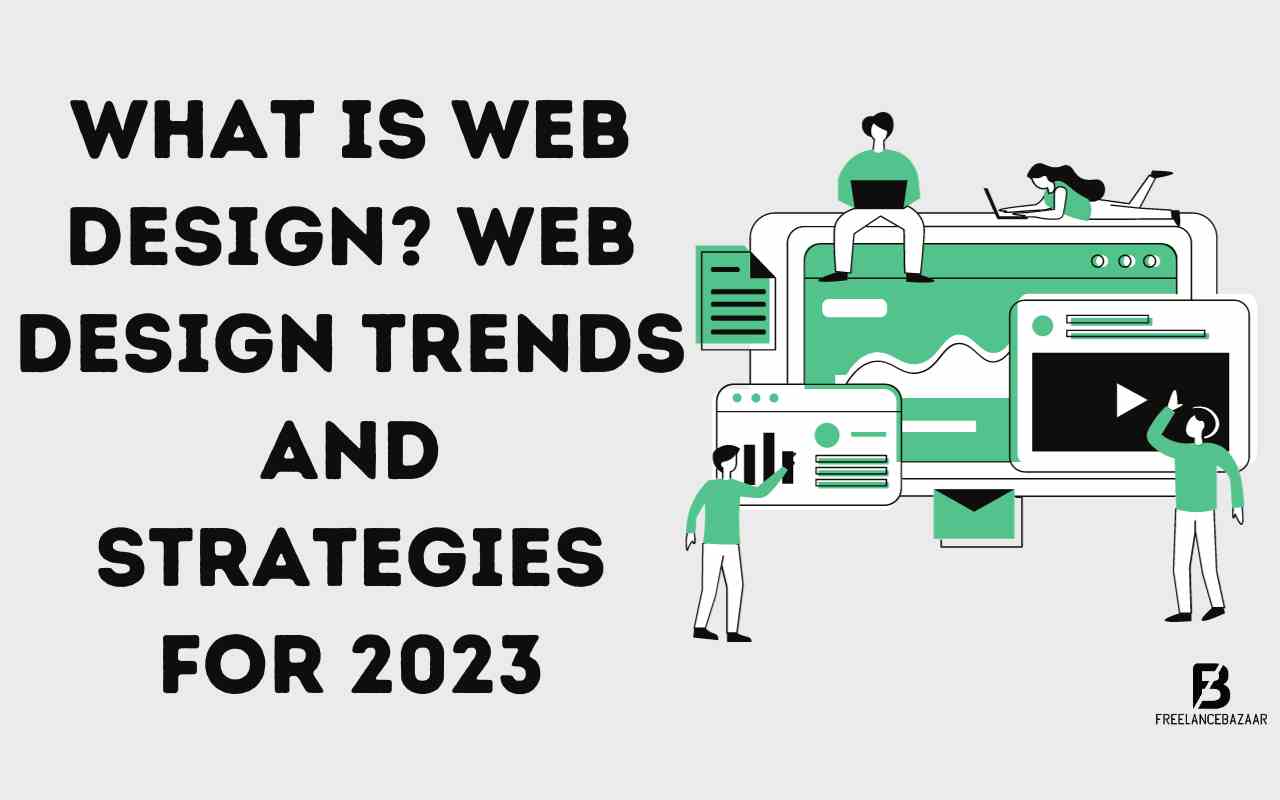In the dynamic and ever-evolving landscape of the internet, web design stands as the cornerstone of online presence and user experience. As we step into 2023, the importance of an aesthetically pleasing and functional website cannot be overstated. Whether you're a seasoned developer, a business owner, or someone just stepping into the digital realm, understanding what web design is and its crucial components is essential. In this ultimate guide, we will delve deep into the intricacies of web design, exploring its evolution, current trends, and the elements that make a website not only visually appealing but also user-friendly and effective.
Evolution of Web Design:
The journey of web design has been a fascinating one, marked by significant milestones that reflect the changing technologies and user expectations.
Elevate your online presence with Freelancebazar's expert Website Design Service. Our freelancers blend creativity and functionality to craft visually stunning websites tailored to your brand. From user-friendly interfaces to responsive designs, trust us to bring your vision to life.
1. The Era of HTML:
In the early days of the World Wide Web, web design was synonymous with HTML (Hypertext Markup Language). Static pages with basic layouts and minimal interactivity defined this era.
2. Introduction of CSS:
Cascading Style Sheets (CSS) revolutionized web design by separating the structure of a webpage from its presentation. This allowed for greater flexibility and creativity in designing layouts.
3. Rise of Flash and Multimedia:
The late '90s and early 2000s saw the emergence of Flash, bringing multimedia elements like animations and videos to websites. While visually engaging, Flash had limitations, and its usage declined with the rise of mobile devices.
4. Responsive Web Design:
With the proliferation of smartphones and tablets, responsive web design has become a necessity. Websites needed to adapt seamlessly to various screen sizes, leading to the adoption of flexible grids and media queries.
5. The Age of Mobile-First Design:
As mobile usage surpassed desktop, designers began prioritizing mobile-first design. This approach ensures that websites are designed with a focus on mobile devices, providing an optimal experience for users on smaller screens.
Fundamentals of Web Design:
Now, let's explore the fundamental elements that constitute effective web design.
1. Layout and Structure:
The layout is the foundation of web design, determining how information is organized and presented. A well-thought-out structure guides users through the content logically.
2. Color Theory and Psychology:
Colors evoke emotions and convey messages. Understanding color theory and its psychological impact is crucial in creating a visually appealing and emotionally resonant website.
3. Typography:
The choice of fonts and how text is presented significantly influences readability and the overall aesthetic. Web designers must strike a balance between creativity and readability when selecting typography.
4. Images and Graphics:
Elevating the aesthetic allure of a website is achieved through the integration of high-quality images and graphics. Optimizing images for web use and selecting visuals that align with the brand's identity are key considerations.
5. Navigation:
A positive user experience hinges on the imperative of intuitive navigation.. Clear menus, easy-to-find links, and a logical flow help users explore the website effortlessly.
6. Responsive Design:
With the diverse range of devices accessing websites, responsive design ensures that the layout adapts seamlessly to different screen sizes, providing a consistent experience across platforms.
7. User Interaction and Experience:
Interactive elements such as buttons, forms, and dynamic content enhance user engagement. Prioritizing user experience involves considering factors like page load speed and accessibility.
Current Trends in Web Design (2023):
Staying abreast of the latest trends is crucial for designers aiming to create contemporary and relevant websites.
1. Dark Mode:
The sleek aesthetic and diminished eye strain associated with dark mode have propelled its popularity. Numerous websites now provide users with the option to switch to dark mode.
2. Minimalist Design:
Simplified and clutter-free designs continue to be in vogue. Minimalist approaches prioritize essential elements, promoting a clean and focused user experience.
3. Microinteractions:
Subtle animations and micro interactions contribute to a more dynamic and engaging user interface. These small, purposeful animations provide feedback and enhance the overall user experience.
4. 3D Elements and Illustrations:
Three-dimensional elements and illustrations add depth and creativity to web design. These can range from subtle shading effects to full-blown 3D graphics.
5. Neomorphism:
Neomorphism, or soft UI, is a design trend that mimics physical objects' appearance, creating a sense of realism through shadows and highlights.
6. Voice User Interface (VUI):
With the rise of voice-activated devices, incorporating voice user interfaces into web design is becoming more relevant. This trend focuses on making websites accessible through voice commands.
Tools and Technologies:
Web design has evolved alongside advancements in tools and technologies. Here are some essential tools and technologies in 2023:
1. Figma:
Figma stands as a collaborative design tool enabling teams to work together on projects in real time. Its versatility makes it a favorite among designers for creating prototypes and designs.
2. Adobe XD:
Adobe XD is a powerful design and prototyping tool that streamlines the design process. It enables designers to create interactive prototypes and share them with stakeholders.
3. React and Vue.js:
JavaScript libraries like React and Vue.js have gained popularity for building dynamic and responsive user interfaces. They facilitate the creation of single-page applications (SPAs) for seamless user experiences.
4. Content Management Systems (CMS):
CMS platforms like WordPress, Drupal, and Joomla simplify website management, allowing users to update content without extensive coding knowledge.
5. Progressive Web Apps (PWAs):
PWAs combine the best of web and mobile applications, providing a fast and engaging user experience. They work offline, push notifications, and can be installed on devices.
Conclusion:
Web design is a multifaceted discipline that combines artistic creativity with technical precision. As we navigate the digital landscape in 2023, the principles of web design remain foundational, while new trends and technologies continue to shape the online experience. Whether you're a designer, developer, or business owner, embracing the evolving nature of web design is essential for creating websites that captivate audiences and stand the test of digital time.
Elevate your online presence with Freelancebazar's expert Website Design Service. From captivating visuals to seamless functionality, our freelance professionals bring your vision to life. Explore tailored solutions, creative expertise, and personalized design services that ensure your website stands out in the digital landscape. Transform your online identity with Freelancebazar's dedicated team of freelance designers.





